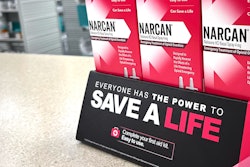
For over two decades, the opioid crisis has impacted the United States (US). The opioid crisis has fueled an overdose crisis that began before the pandemic and then exploded during and after the pandemic. The Centers for Disease Control and Prevention (CDC) report the number of overdose deaths in the United States (US) has more than doubled in the past five years.
Tragically, over 105,000 Americans died from all overdoses in calendar year 2022. Approximately 70% of all overdose deaths in the US are attributed to opioids. Almost 70% of all opioid deaths are due to synthetics, especially fentanyl.
Overdose deaths inflict a toll on families, workplaces, communities, and the national economy. The opioid crisis impacts every socioeconomic class of the US albeit with some notable age, gender, geographic, demographic, and occupational disparities.
A recent National Center for Health Statistics report confirmed the construction and extraction industries have been hit hard by the opioid crisis. Released on August 22, 2023, “Drug Overdose Mortality by Usual Occupation and Industry: 46 U.S. States and New York City, 2020.” This is the first time there has been national data highlighting the impact of the opioid on industry groups and occupations.
The construction and extraction industries had the highest rate of overdose deaths in 2020 the first year of the pandemic:
- The rate per 100,000 workers was reported as 162.6 per 100,000 workers.
- Isolating the construction industry from the extraction industry, the rate is 130.9 per 100,000 workers.
- The overdose death rate for construction is almost three times higher than the rate of suicide for the construction industry reported as 45.3 per 100,000 workers.
Based on annual Census of Fatal Occupational Injuries (CFOI) from the Bureau of Labor Statistics (BLS), 2021 was the 9th consecutive annual increase of workplace and/or jobsite fatalities from unintentional overdose from nonmedical use of drugs and alcohol. This now accounts for over 8% of all occupational fatalities. This data has not been available by industry. However, with the recent CDC report, it appears reasonable to project that construction accounts for a large if not disproportionate share of these fatalities. This is one explanation for the growing prevalence of contractors stocking naloxone (Narcan) on jobsites to reverse the effects of overdoses.
Note: The BLS reported the CFOI for 2022 is expected to be released on December 19, 2023.
Assessing Risk Factors
Opioid risk reduction and overdose prevention is a complex problem. There is no “easy button” or single solution. There are many interrelated causal and contributing factors for why and how construction and extraction have been disproportionately impacted by the opioid crisis.
Addressing the opioid and overdose crisis requires straight talk to acknowledge that there is a problem. Stigma associated with substance misuse creates barriers to care-seeking for addiction treatment and recovery. Musculoskeletal injuries and prescriptions for on- and off-the job injuries and surgeries have been identified as contributing factors.
Musculoskeletal Injuries
A major contributing factor for opioids in construction stems from the high frequency of musculoskeletal (MSK) injuries affecting construction workers. The Center for Construction Research and Training (CPWR) highlights approximately 34% of construction workers have at least one musculoskeletal disorder which leads to opioid prescriptions.
Prescription Medications
Prescriptions for on- and off-the-job injuries and surgeries continue to be source of new cases of persistent opioid use in construction. “In Waging a Counterattack Against Opioids in the Workplace and at Home,” the increased frequency of opioid prescriptions among construction workers is highlighted. Moreover, prescription doses were reported as being 20% stronger and for 20% longer durations. The American Medical Association (AMA) reports reductions in opioid prescriptions decreasing for 13 consecutive years. The AMA highlighted there has been a 49.4% decrease in the number of opioid prescriptions from 2012 to 2022. However, the AMA concluded “reductions in opioid prescribing have not led to reductions in drug-related mortality.”
Initial Prevention Strategies for Employers
- Identify resources and services available to employees and family members seeking support for substance misuse addiction treatment and recovery. This includes understanding the resources and services available from a company- or union-sponsored employee health benefits programs, including Employee Assistance Programs (EAPs) or Member Assistance Programs (MAPs).
- An increasing number of contractors are sharing information about recovery programs, including 12-step programs, like Alcoholics Anonymous and Narcotics Anonymous. SMART Recovery is another option, which stands for Self-Management and Recovery Training. Peer support programs are gaining traction in throughout the construction industry.
- Contractors are encouraged to review Worker’s Compensation injury reports to identify operations and work practices with high potential for musculoskeletal injuries. Expand injury prevention to reduce the frequency and severity of soft tissue sprain and strain injuries. For contractors not yet instituting warm-up exercise programs this is an effective way of decreasing exposure to sprains/strains.
- Provide basic education on opioids in toolbox talks or in conjunction with daily safety huddles on risks of opioids. Educate employees about the risks of opioids and the availability of alternative pain management products and products and other first dose prevention strategies. Reinforce the importance of everyone becoming an advocate for themselves and their family members scheduled for any medical, surgical, or dental procedures to minimize unnecessary exposure to opioids. The Center for Construction Research and Training (CPWR) has compiled various resources that can help with developing supervisory and employee education on opioid risk reduction.
- Download and read the linked comprehensive yet practical reports from prominent researchers specializing in opioid risk reduction strategies and education:
• Dr. Ann Marie Dale at the Washington University Medical School in St. Louis – “Workplace Guidelines to Prevent Opioid and Substance Abuse for the Construction Trades”
• Dr. Cora Roelofs at the University of Massachusetts-Lowell’s work focusing on opioids in the sand and gravel mining sector.




















